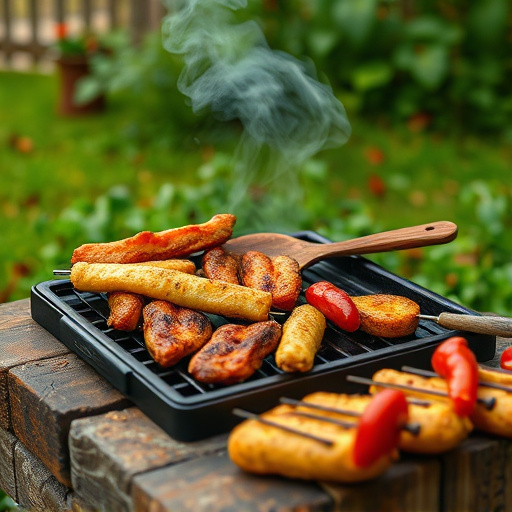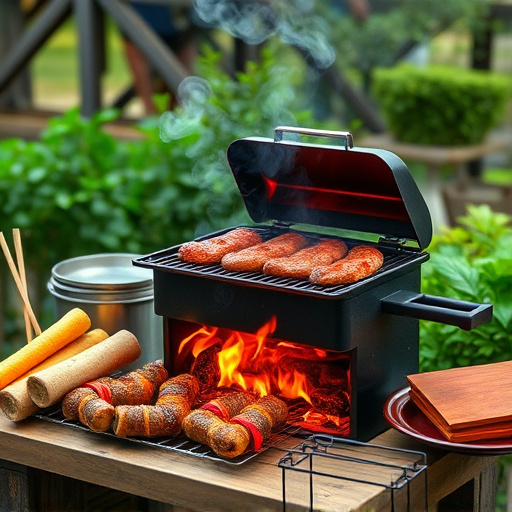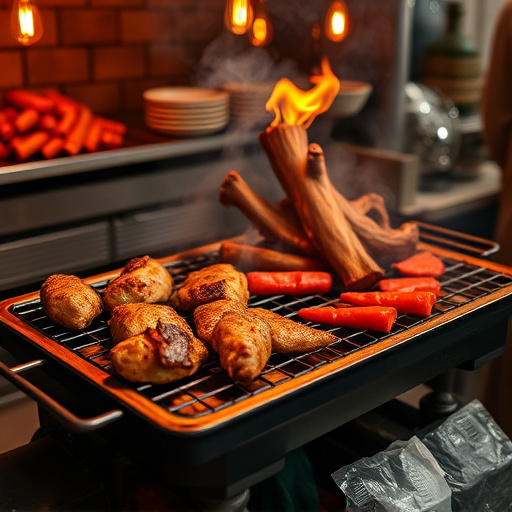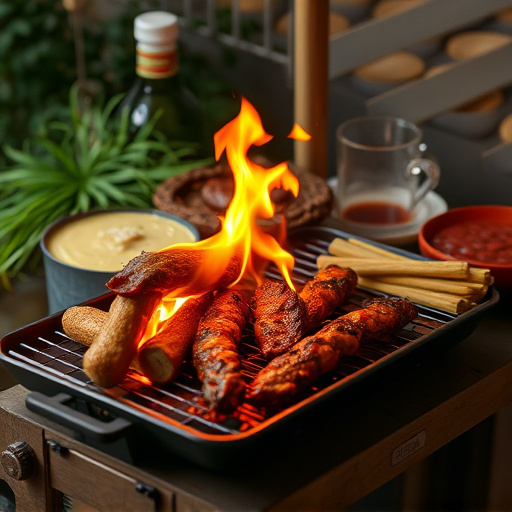Selecting the perfect cut (packer brisket) and understanding brisket grades are key for a standout BBQ brisket recipe, especially in the oven. Using a dry rub with brown sugar, paprika, salt, pepper, garlic powder, and cayenne enhances flavors and creates a crispy crust. The right preparation ensures tender, juicy meat suitable for any occasion.
Looking for a showstopper recipe that’ll impress any crowd? Discover the ultimate guide to crafting the perfect BBQ brisket, cooked to perfection in your oven. From selecting the ideal cut and grading your meat to creating a lip-smacking dry rub and mastering the art of slow cooking, we’ve got you covered. Learn how to turn this classic into modern twists, complete with serving suggestions for any occasion. Elevate your culinary skills with our savory brisket recipe – perfect for BBQ enthusiasts and host with a passion.
- Choosing the Right Brisket: A Foundation for Flavor
- – Selecting the perfect cut of brisket
- – Understanding different brisket grades and their impact on taste
- The Magic of Dry Rub: Seasoning Your Brisket to Perfection
- – Creating a balanced dry rub blend
Choosing the Right Brisket: A Foundation for Flavor

When it comes to crafting a standout BBQ brisket recipe, the first step begins with selecting the perfect cut. Brisket is a versatile and flavorful muscle, but choosing the right one is key. Look for a good quality, well-marbled brisket with a thick layer of fat—this isn’t just for keeping the meat moist during slow cooking; it’s also packed with flavor. Opting for a whole packer brisket, with both the point and flat muscles intact, ensures a robust and tender final product.
A high-quality brisket forms the foundation for an exceptional BBQ brisket recipe, oven-roasted or smoked. The fat acts as a natural barrier, keeping the meat juicy and infusing it with rich, smoky flavors during the slow cooking process. This attention to detail in choosing your brisket will make all the difference in creating a memorable dish suitable for any occasion.
– Selecting the perfect cut of brisket

When it comes to a standout BBQ Brisket Recipe, choosing the right cut is half the battle won. Opting for a high-quality, well-marbled brisket is key to achieving tender, juicy meat that simply falls apart at the touch. Look for a packer brisket, which is considered the premium choice due to its larger size and even fat distribution—this ensures a moist, flavorful outcome when slow-cooked in the oven or on the grill. The ideal cut should have a good balance of lean muscle and fat, allowing for a rich, smoky flavor to develop during the cooking process.
Remember, selecting the perfect brisket is an art, and butchers with expertise can guide you in choosing the best cut for your desired method—whether it’s slow-roasted in the oven or smoked to perfection on your backyard BBQ. This thoughtful selection will lay the foundation for a memorable culinary experience, serving as the centerpiece of any occasion.
– Understanding different brisket grades and their impact on taste

When it comes to a mouthwatering BBQ brisket recipe, understanding the different grades of this cut is key. Brisket is a versatile and flavorful muscle, but its composition varies, impacting the final taste and texture. The most common grades are Prime, Choice, and Select, with Prime offering the tenderest meat due to higher marbling (fatty streaks) throughout. This grade is ideal for slow-smoking or oven-roasting for an opulent dining experience. On the other hand, Choice brisket has good marbling and a balanced flavor, making it suitable for various cooking methods, including traditional BBQ techniques. Select brisket has less fat but still delivers robust flavor, often preferred for cost-effective meals that require longer cooking times to become tender.
Choosing the right grade depends on your desired outcome. For an oven-roasted BBQ brisket recipe, Prime or Choice is recommended for a richer taste and juiciness. Whether you’re aiming for a fall-apart texture or a slightly chewier bite, selecting the appropriate brisket grade ensures a satisfying culinary journey.
The Magic of Dry Rub: Seasoning Your Brisket to Perfection

The art of dry rubbing is an essential step in crafting the perfect BBQ brisket recipe, especially when cooking it in the oven. This simple yet powerful technique involves coating your meat with a blend of spices and herbs, allowing them to penetrate and transform the flesh during the slow-roasting process. By combining ingredients like brown sugar, salt, pepper, garlic powder, paprika, and chili powder, you create a complex flavor profile that enhances the natural juiciness of the brisket without adding extra moisture.
This dry rub not only adds depth but also contributes to the development of a stunning crust, which is a hallmark of a successful BBQ brisket. The oven’s heat interacts with the seasoning blend, creating a caramelized effect on the surface while locking in the tenderizing and flavor-boosting properties within. This method ensures that your brisket is not only mouthwatering but also visually appealing, making it the perfect centerpiece for any occasion.
– Creating a balanced dry rub blend

Creating a balanced dry rub is key to achieving mouthwatering, smoky BBQ brisket in the oven. The perfect blend should include a combination of spices that enhance the natural flavors of the meat without overpowering it. Think brown sugar for sweetness, paprika for smoke, salt and pepper for depth, garlic powder for kick, and perhaps a touch of cayenne for heat (adjust according to your preference). These ingredients work together to create a complex, savory taste profile that will have your family and friends asking for more.
When preparing your dry rub, make sure to mix all the spices thoroughly in a bowl. You can adjust the quantities based on your personal taste preferences and the desired level of heat. Once blended, apply the dry rub generously to both sides of the brisket before placing it in the oven. This step is crucial as the rub not only adds flavor but also helps create a crispy, golden crust during the cooking process.
